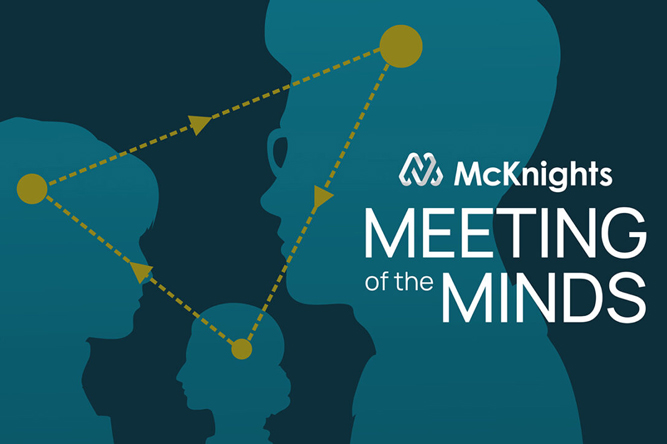

Do you feel like most articles on workforce solutions just end up being clickbait? There doesn’t seem to be a magic answer, scalable process, or software solution that will work for every organization. Why is that? Because workforce, at its core, is about people. It’s about you and me, and how we treat each other as employers, coworkers, and humans.
During the COVID-19 pandemic we’ve seen a significant increase in employee burnout. Employees are leaving their jobs in search of purpose and fulfillment, and the median turnover among nurses in long-term care is at 128 percent.[1]
Some are calling this the Great Resignation. Gallup is calling it the Great Discontent.[2]
- Millions of people quit their jobs in the last year (3.6M in May 2021 alone).
- A new Gallup study reveals that 51% of the working population is actively job searching or watching for opportunities.
- The working population has always cared about their work environment, but the pandemic has added a new dimension; now, there is a willingness to act on a bad environment, toxic culture, or bad boss.
These are complex issues that need systematic, multitiered solutions that can’t be fixed with a blog. What we can do here is talk about how to focus on the strengths of the employees you do have and potentially attract more of what you want.
According to that same Gallup study, it’s not just how we are treating our employees anymore—it’s also about how we’re not treating them. These days, if employees feel undervalued and unheard, they will likely leave. So how do we make sure that doesn’t happen?
Gallup research indicates that people who use their strengths are six times more likely to be engaged on the job.
If we focus more on employee’s strengths, we have a better chance at retaining the staff we currently have. A strengths-based approach promotes understanding and maximizes one’s strengths rather than improving weaknesses. Strengths are those things we are naturally good at—not the skills and knowledge we acquire along the way.
Take the Time to Find Out Your Employee’s Strengths
- Have regular coaching conversations. Anyone unsure of how to do that effectively? When you think about coaching, does your mind immediately go to a problem that needs to be fixed? Coaching should start well before there are issues that need to be addressed. When you think about coaching, think about the person. It’s that simple. Oh, and listen.
- Look for clues to strengths. Use that coaching time to ask a few questions, then really listen to what they have to say. Ask them to describe when they feel most successful. What does their best day at work look like? You may hear, “I love it when I can check everything off my list before I go home” or “I like it when I have time at the end of my shift to talk to my residents.” You may even hear something like, “I really like to solve problems. My coworkers come to me when they need help figuring things out and that makes me feel good.” These are all indicative of individual strengths.
- Be sure to include positive feedback about how they are using their strengths and how it really impacts the team and residents. Find out what their goals are and what they need from you.
- Repeat. Continue these conversations regularly. It may work best if you schedule these sessions, but it can be as simple as grabbing an unscheduled five minutes in the hallway.
- Help them find ways to have more of their “best days” at work. For the employee that really likes to spend dedicated time talking with residents, perhaps you can involve them in more one-on-one activities. The employee that likes to solve problems may be a good candidate to act as a mentor for new staff. Really knowing your staff and how they can positively contribute will improve employee engagement and organizational culture.
- When you are able, assign specific tasks according to strengths. Someone who loves to check things off a list may not feel satisfied sitting at the front desk answering the phone all day. However, that task may be a great fit for the employee who enjoys connecting with people.
Be Proactive and Open
Give it a try. Don’t wait for the perfect time to start or you may never begin. Be open. Don’t prejudge the conversation. Listen. Be fully engaged and focused on your employee. We guarantee it will be a positive experience for you and your employees. Who knows, they may even tell their friends!
So, you may ask, is focusing on strengths really a novel idea? We think so. And a novel idea that can be consistently applied turns into a practice. Then it becomes a part of the team’s culture—it’s what we do.
Great performance comes when you can do what you love, and typically, people love what they are good at. Helping people understand their strengths and how to use them every single day will have a significant impact on culture and performance.
If you’d like to find out how we can help you create a strengths-based organization, Click Here.

All kidding aside, the studies don’t lie. Focusing on strengths increases productivity and profitability, improves safety, and ultimately improves employee engagement. And while it’s vital to invest things like technology, upgrading physical plants and equipment, really investing time and dollars in developing people can be the real innovation our industry needs.
For more information on how HDG can help you improve employee engagement, please contact us at info@hdgi1.com or 763.537.5700.
[1] Health Affairs, Vol. 40, 3, 2021.
[2] https://www.gallup.com/workplace/351545/great-resignation-really-great-discontent.aspx












